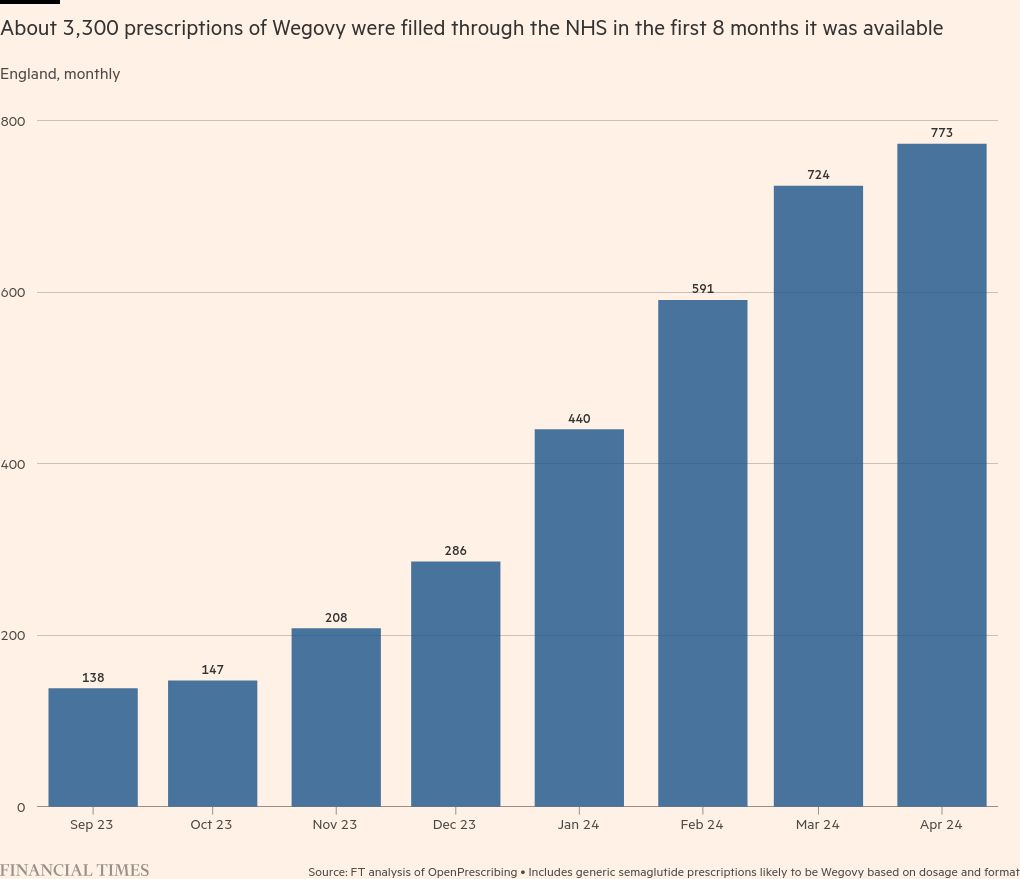An increasing number of women are seeking private IVF treatment in England as the National Health Service withdraws funding for fertility services.
According to the Human Fertilization and Embryology Authority, an independent regulator, only 24 per cent of IVF cycles in England were funded by the NHS in 2022, compared with 32 per cent in 2019.
With birth rates falling, academics and charities are calling for a national policy to provide fertility care through the NHS.
The public health body, the National Institute for Health and Care Excellence, recommends that women under 40 who have not been able to conceive for two years should be offered three full cycles on the NHS.
According to the guidelines, women between the ages of 40 and 42 should be given one cycle.
However, Integrated Care Boards (ICBs), which allocate NHS resources to local health services, are not legally required to offer this to couples.
Experts have warned that this has created a “postcode lottery”, with NHS funding for IVF cycles varying greatly in different parts of the UK.
According to a Financial Times analysis of data collected by the fertility charity Progress Educational Trust (PET), only three of 42 ICBs in England have policies in line with the Nice guidelines.
Half of ICBs offer no treatment to women aged 40 and over, but some are reviewing their offer.
“The fundamental problem is that NHS funding is not consistent across England – it’s shockingly bad that it can vary by miles,” said Clare Huecklin, operations manager of the UK Fertility Network. “We believe that every ICB should meet the Nice guidelines.”
According to the HFEA, only 16,200 of the estimated 67,000 IVF cycles in England in 2022 were funded by the NHS. This is a 17 per cent drop from 2019, when the NHS funded 19,600 cycles out of a total of 60,400.
Other parts of the UK have also seen a decline in NHS IVF treatments, although there has been less reliance on private clinics. Between 2019 and 2022, the proportion of NHS-funded cycles fell from 62 per cent to 53 per cent in Scotland and from 39 per cent to 34 per cent in Wales.
Sarah Norcross, director of PET, believes NHS provision is falling because “there is no pressure or incentive for local commissioners in England to fund this properly”.
The fertility rate in England and Wales has continued to fall since 2010, reaching a record low of 1.5 in 2022. This is well below the “replacement level” of 2.1 children per woman at which a country’s population is considered stable without immigration.
According to the Office for National Statistics, no local area has a fertility rate above the replacement rate, which in 2012 was almost a third.
The average age of first-time IVF patients was just over 35 in 2022, the highest since data collection began in 1991. By comparison, the average age of a first-time mother in England and Wales is 29, according to the ONS.
Experts say many women choose not to have children because of the rising cost of living and the impact parenthood can have on their careers.
“We’re looking at a downward trend to the point that anything that can be done to help women who want to have children is a good thing,” said Sarah Harper, a professor of gerontology at the University of Oxford. “We really need to pull every lever we can, including more support for fertility treatments.”
The NHS estimates that one in seven couples may have difficulty conceiving. One cycle of IVF can cost “£5,000 or more” if accessed privately.
The decline in birth rates in recent years has been driven by women in their 30s, who are responsible for the majority of babies. Births to mothers over 40 have risen rapidly in recent decades, but this group still accounts for only one in 20 live births.
Fertility treatment is no longer a health care,” said Kayleigh Hartigan, founder of Fertility Mapper, a consultation and review platform on fertility services. “This is how the majority will create families in the future.”
“At the national level we’re all scratching our heads about how to solve the problem of declining national birth rates, and we don’t have a national policy to provide fertility treatment,” Hartigan added.
One of the reasons NHS funding is falling is that changing demographics mean women do not qualify for the various criteria set by ICBs. Criteria include weight, age and personal circumstances, including how long you’ve been with the partner.
According to Hartigan, 74 percent of ICBs stipulate that you cannot already have children from your current or previous relationships.
Professor Geeta Nargund, medical director of Create Fertility, a London-based clinic, added: “Falling levels of NHS funding for IVF treatment is a reflection of the downturn in fertility treatment accessibility in the UK and needs to be specific. An aging society on the brink of a fertility rate crisis is cause for concern.
An NHS spokesman said: “These decisions are legitimately for local health commissioners who must balance the various competing demands of the NHS locally, and they are absolutely right to provide equal access to services according to the needs of people in their area.”
A Department of Health and Social Care spokesman added: “Everyone should have access to the fertility services they need, no matter where they live.
“There are clear clinical guidelines that will make sure there is equal access across the country, and we fully expect those will be followed.”
#women #England #opting #private #IVF #treatment

